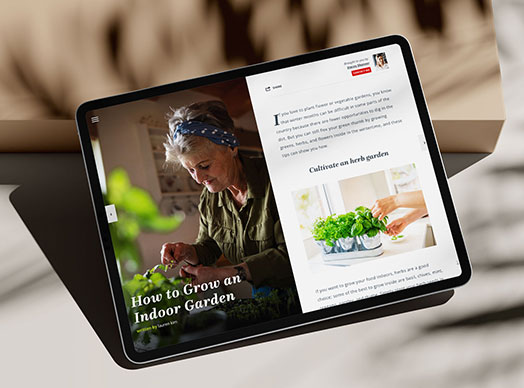8 Tips for Creating a Lead-Converting Case Study
8 Tips for Writing Creative Marketing Case Studies (AI, Examples, and More)
Nothing builds consumer trust and confidence and attracts warm leads like a case study that details a powerful client success story.
If you’re eager to revolutionize your lead-generation game, then get ready—in this week’s Silver Dollar episode, we unveil the transformative power of case studies along with eight tips for how to maximize their persuasive appeal.
A case study can be many things, but we’re focusing on them as stories that take a thorough look at how you, as a service professional, solved a problem and achieved success for a client. They’re powerful marketing tools because they speak to your expertise and skills, demonstrate your effectiveness, and build trust.
Use these guidelines to create case studies that will paint a vivid picture of your impact and leave a lasting impression on potential clients.
- Select a story. From your own experiences, choose a client whose situation is one that many people in your target audience could relate to.
- Describe the context. Provide details about the client’s specific problem; include anything about the circumstances that may have been unique or particularly challenging. Explain the client’s goal, and be sure to reveal why they chose you to help.
- Highlight your expertise. Share the strategies and tactics you used to meet the challenge described, incorporating as many details as possible. (We provide an illuminating example that demonstrates the advantage of including particulars.)
- Quantify the results. Again, the more specific you can be about what you accomplished, the more compelling this marketing tool will be.
- Capture the emotional impact. Convey the overall ROI your involvement produced for your client, including outcomes that reflect more than monetary savings or gain. Refer to their experience—did you relieve their stress, provide for a better future, or give them confidence?
- Account for the visual appeal. When you create your case study, consider what the end product will look like. Whichever the medium (blog, printed report, video, etc.), we offer different suggestions to keep in mind.
- Make it engaging. Tailor the case study to your target audience, focusing on what they want to see or hear. What are the results they’re most interested in? Remember, at its core, a case study is a story—make it an interesting one.
- Include a CTA. As with all marketing, you want to tell your audience what to do with the information you’ve provided. We offer several examples of actionable steps you can easily incorporate and your audience can easily complete.
We hope you enjoy this episode and act on the advice Luke offers at the end. We’d also appreciate it if you took a moment to leave us a 5-star review and comment on Apple Podcasts. (We read them on air!) Thanks for listening!
Connect | Resources
FREE e-book: The Relationship Marketer’s Guide to Growth Hacking
You can get more free resources, including additional e-books, printables, and lead magnets to attract new leads, by visiting our Resource Library.
Are you interested in working with Luke and Josh to improve your marketing, get more referrals, enjoy more repeat business, and begin living the life of freedom you deserve? CLICK HERE and get a special offer just for Stay Paid listeners!















 Soundcloud
Soundcloud iHeart Radio
iHeart Radio Spotify
Spotify Spotify
Spotify


